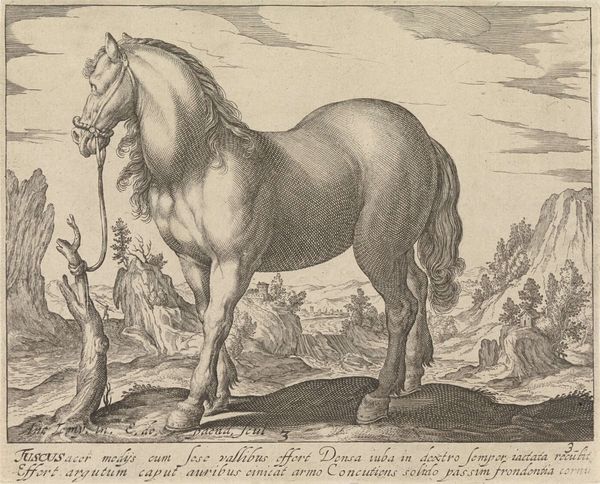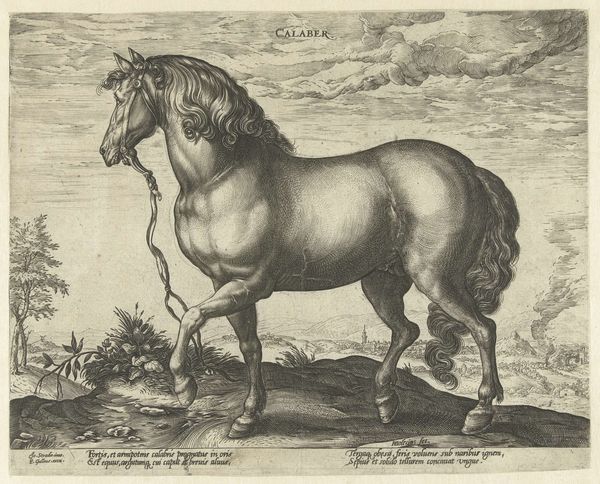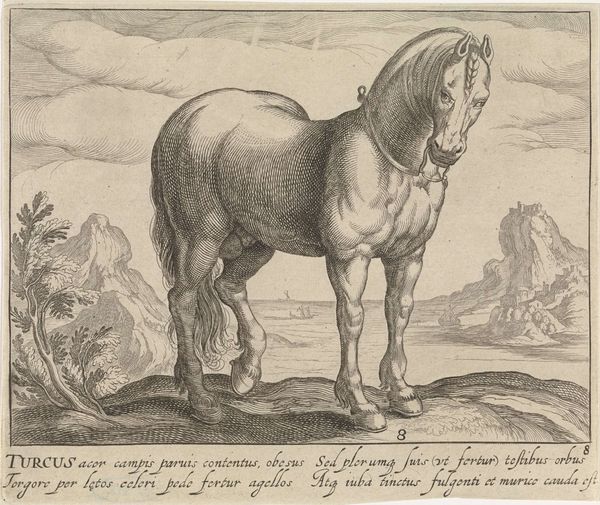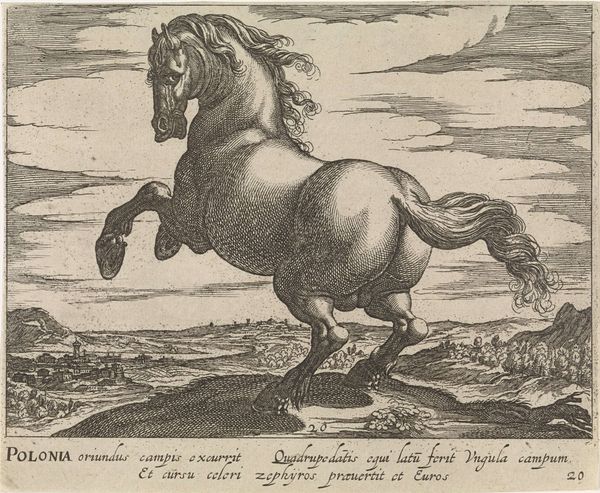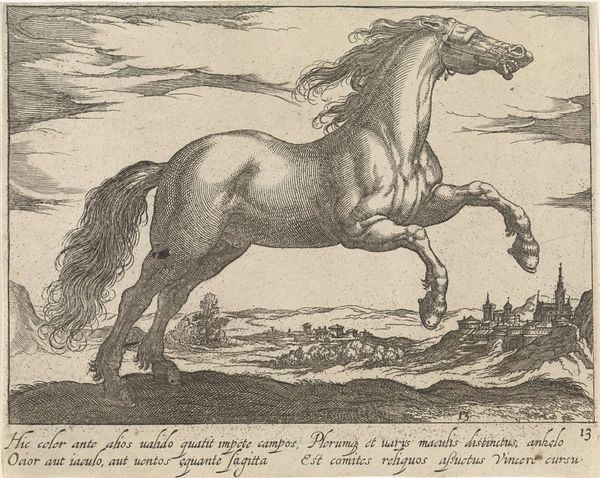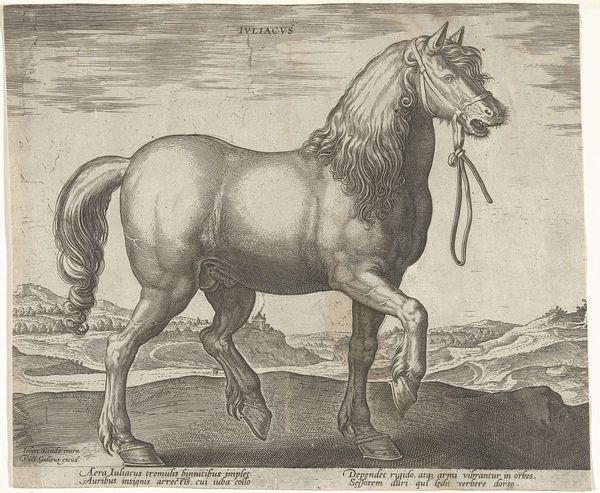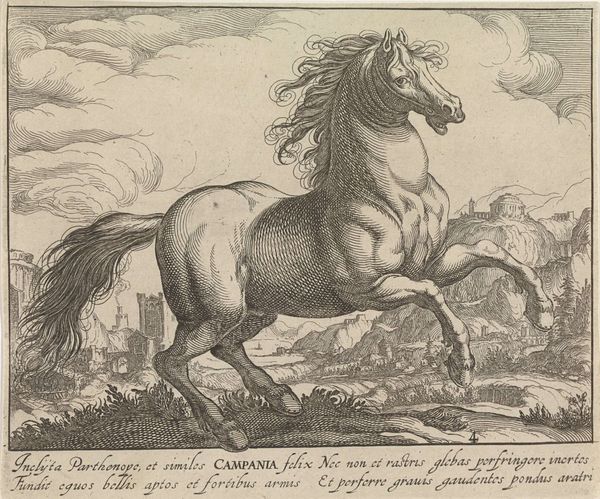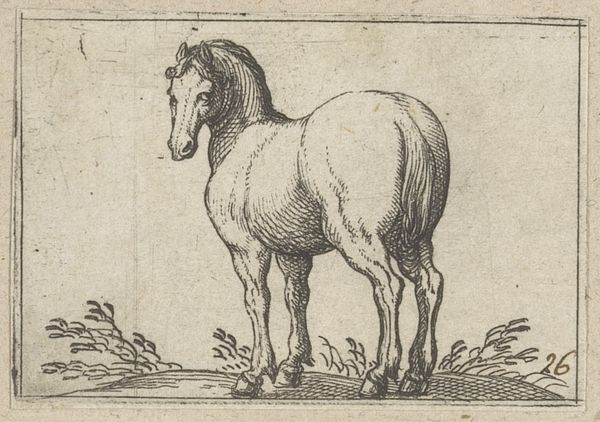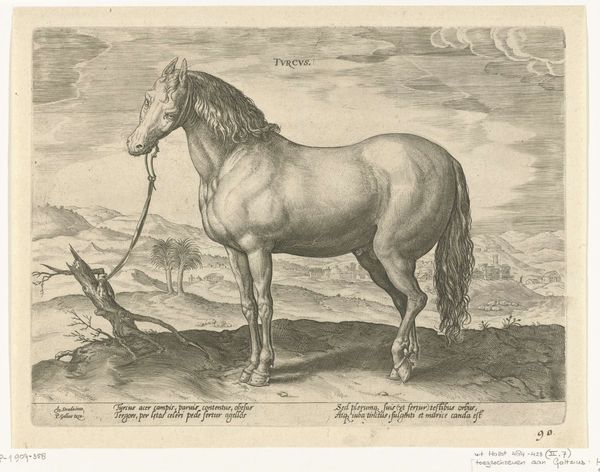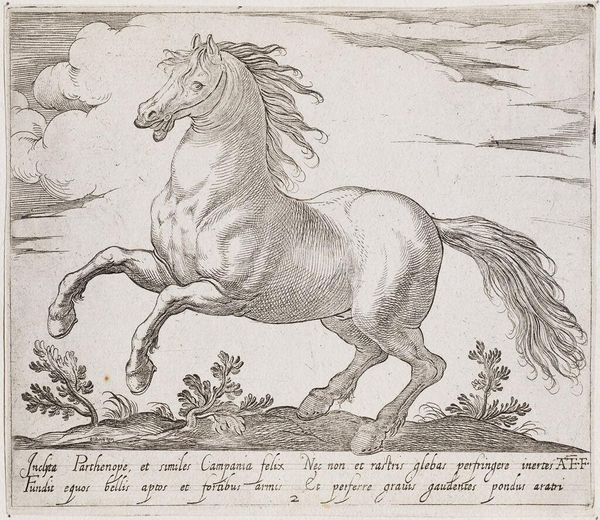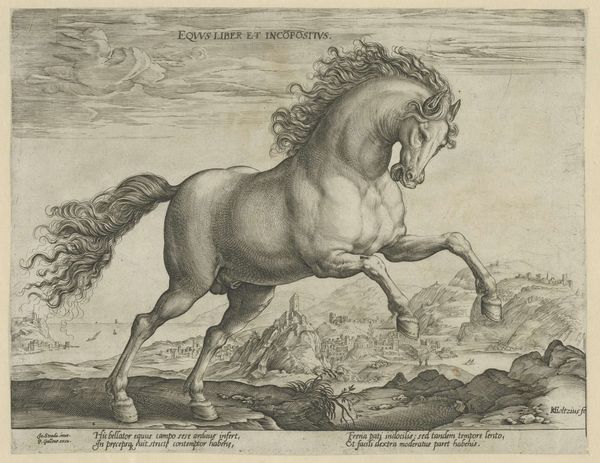
print, engraving
#
baroque
#
animal
# print
#
landscape
#
figuration
#
horse
#
history-painting
#
engraving
Dimensions: height 138 mm, width 163 mm
Copyright: Rijks Museum: Open Domain
Curator: Here we have "Landschap met paard uit Engeland (Brito)" or "Landscape with Horse from England (Brito)," an engraving dating from around 1590 to 1637. Editor: The texture alone is captivating. It’s almost hyper-realistic, the horse is so detailed with the muscular definition achieved just with lines. What's its scale like? Curator: This work by Egbert van Panderen exists as a print, so the work isn't very large at all; its strength lies in the image rather than any impressive scale. Horses often symbolized nobility and status. Brito here likely represents an idealized vision of English power and breeding, meant to be admired and emulated. The surrounding landscape further emphasizes this, grounding the animal in a fertile, well-managed domain. Editor: I can see that, definitely, but look closer: that careful shading delineating the horse’s powerful build – almost sculptural in its definition – creates movement. It feels posed, as if on a classical frieze. And see the subtle interplay of light and shadow? It models the muscles and creates the dynamism. The surrounding is almost inconsequential next to this dominating figure, but the added detail to the surrounding vegetation provides depth. Curator: That tension is central. While the horse is a classical symbol of power, notice how Panderen adds the bridle that restrains its power. This shows that raw power must be controlled and directed for civilized society to thrive. It's a potent image in an era defined by social and political upheaval, no? Editor: I suppose that that makes a lot of sense, with an age of nobility relying on taming such an immense force into docility. But from an artist's point of view, look at the foreground vegetation next to its fore-hooves – an almost nonchalant disregard for perspective. It's little visual contradictions like this that keep me returning to it. The foreground textures lead the eye. Curator: Precisely. It offers insight into 17th-century ideas about national identity and power through familiar iconography, while layering the social values of controlling and managing. Editor: All things considered, this piece serves as a reminder that even the most formal art can reveal delightful incongruities upon closer observation, even from a time long before today.
Comments
No comments
Be the first to comment and join the conversation on the ultimate creative platform.
